I Analyzed the App Monetization Strategies of Successful Brands: Here Are the 5 Models That Prove Effective

If there’s one thing we’ve seen from the incredible innovators we’ve worked with at Appetiser, it’s this: building a great app takes heart, hustle, and a clear vision.
Many founders come to us with visions that have the potential to be game-changers—stunning designs, seamless functionality, and features users would genuinely love.
But even the best ideas need a solid monetization plan. Having a cool app is great, but without a clear revenue strategy, even the most groundbreaking app ideas risk becoming expensive hobbies.
That’s where monetization comes in. To turn your app from a great idea into a profitable venture, you need a strategy that works.
In this article, I’ll take you through five effective app monetization strategies that have worked for successful apps. I’ve also compiled frequently asked questions and gathered firsthand insights and tips from one of our product managers.
Read on to discover how you can turn your app into a profitable, long-lasting business.
5 Effective App Monetization Strategies to Help You Earn More (Expert Tips and Case Studies Included)
As an app publisher, making money from your app is likely at the top of your mind. It’s a challenge we hear all the time from the hundreds of founders we work with. The truth is, turning your app into a consistent revenue stream requires more than just a great product. It requires careful thought and strategy.
Here are five monetization models that have actually worked for app publishers like you:
1. In-app purchases
Have you ever bought a cool outfit for a game character or ordered something directly from the app?
Congratulations, you’ve contributed to the $127 billion spent globally on in-app purchases.
Here’s the beauty of this revenue model: it lets you offer your app for free while still earning big.

Source: City Building
From virtual gaming upgrades to real-world goods, in-app purchases make it easy for users to spend without leaving the app.
And it works.
About 79% of gaming apps and 50% of non-gaming apps are already using this strategy.
Why? Because it’s a win-win—users get what they want, and you keep the revenue flowing.
App monetization success story you need to hear

Source: Roblox
One app that I think nails the in-app purchase model is Roblox. In the second quarter of 2024, Roblox has made over $276.61 in revenue coming from sold items in the app.
The game itself is free to play, but it thrives on the sale of its virtual currency, Robux. Players use Robux to buy in-game items, accessories for their avatars, and access to premium experiences created by other users.
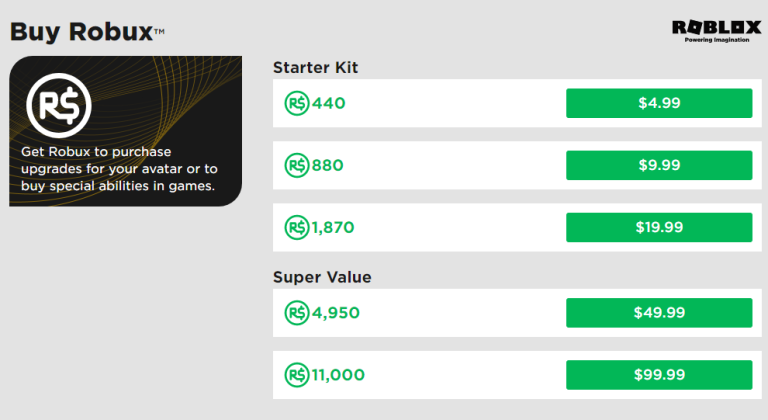
Source: Roblox
What I love about Roblox is its massive user-generated economy. Players can create and sell their own virtual items, which makes the in-app purchase model feel fully integrated into the platform.
The beauty of this model is that it keeps the game and the core user experience accessible to everyone while still driving revenue through cool, non-gameplay items.
Roblox’s success shows how in-app purchases can add value without disrupting the experience. It’s all about creating a compelling, customizable experience that keeps users engaged and coming back.
What are the pros and cons of the in-app purchases model?
| Pros | Cons |
|---|---|
| Free to download. – No barrier for users to try your app | User resistance. – Some users may dislike constant prompts to buy |
| Ongoing revenue. – Users can make purchases repeatedly. | Imbalanced experience. – Too many paid features may frustrate users. |
| User convenience. – Purchases are seamless within the app. |
2. Freemium model
The freemium model is the second-most widely used app monetization strategy and one of the most profitable.
And it is a favorite for a reason.
Here’s how it works: you let users download and use your app for free, but with some features locked.

Source: Bumble
If they want to unlock the full experience or get extra features, they can pay for a subscription. You can offer a one-time payment or a recurring subscription—whatever works best for your app.
Users get a taste of what your app offers without any risk, and if they like it, they’ll often be willing to pay for more.
It’s a simple idea, but it works.
App monetization success story you need to hear
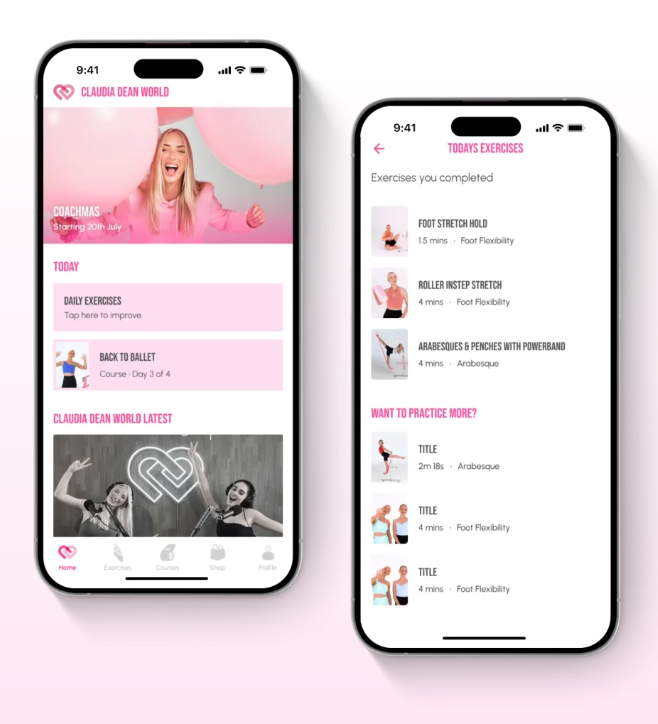
Claudia Dean’s fitness app is a standout example of successful app monetization. They’ve mastered the freemium model by hooking users with free workouts and reserving tailored, premium content for those willing to pay.
With 20,000 users joining every month, it’s clear their strategy works.
What I admire about Claudia Dean’s app is how they tap into users’ fear of missing out (FOMO).
They make premium features feel exclusive, positioning them as something users have to unlock. Pair that with smart targeting of the right age group, and it’s a recipe for success.
It’s the perfect balance of exclusivity, connection, and value.
What are the pros and cons of the freemium model?
| Pros | Cons |
|---|---|
| Large user base. – Free version attracts more users. | Conversion challenge. – It can be tough to convert free users to paid subscribers. |
| Recurring income. – Monthly or yearly subscriptions bring steady cash flow. | Limited free features. – The free version must still provide enough value to keep users engaged. |
| Scalable. – You can easily adjust pricing tiers to grow with your app. |
3. Paid app model
The paid app model is as straightforward as it gets—users pay upfront to access your app. Once they purchase, they get full access to everything your app has to offer.
One of the key benefits of the paid app model is that you generate revenue immediately after a download. You don’t need to rely on ongoing subscriptions or in-app purchases to make money.
Every download is a guaranteed income.
The challenge is getting users to commit upfront. But if your app offers a unique solution, solves a major problem, or provides a premium experience, users will be more likely to pay for it.
Think of it as solving a problem users didn’t even know they had or giving them something they didn’t want to miss out on.
Top paid apps 2025
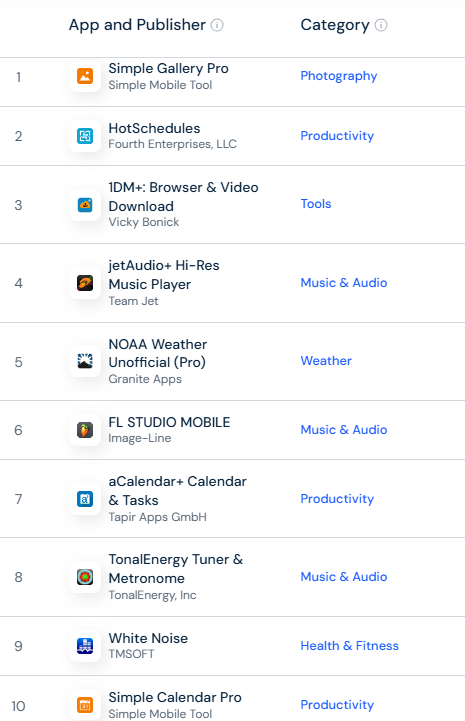
As of Jan 16, 2025
Source: Similarweb
Whether it’s a specialized tool, a time-saving app, or a game offering exclusive content, users are willing to pay if the benefits and value are obvious.
In our experience, that “exclusive” positioning plays a big role, too. By framing premium features as something special or tailored, you can make users feel like they are part of an elite group.
And when paired with well-targeted demographics, this sense of exclusivity drove conversions even further.
App monetization success story you need to hear
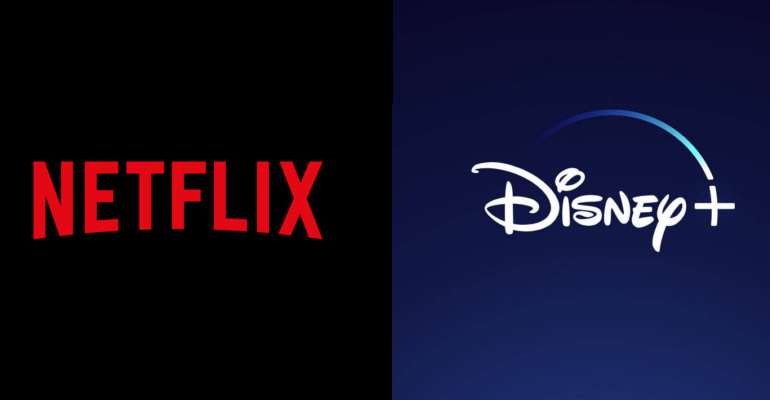
Source: DispCam
For me, Netflix and Disney+ are the gold standards when it comes to subscription-based apps. Neither offers a free tier—you subscribe or miss out—and honestly, it works.
What I love about Netflix is how they hook you with exclusive shows like Stranger Things and The Crown.
Disney+ takes it up a notch with Marvel, Star Wars, and the Disney classics most paying adults grew up with.
Both brands, once again, tap into FOMO brilliantly. There’s always something new and buzzworthy, so you feel like you can’t cancel without missing out.
Their seamless streaming and multi-user plans make it feel like you’re getting serious value for your money.
They prove that if your content is good enough, people will gladly pay upfront.
See related article: How to Create an App Like Netflix in 9 Simplified Steps (With Experts’ Insights)
What are the pros and cons of the paid app model?
| Pros | Cons |
|---|---|
| Immediate revenue. – You make money upfront with every download. | Harder to attract users. – Users may hesitate to pay upfront without trying the app. |
| No ads. – Your app remains clean, without interruptive ads. | Limited audience. – Only those willing to pay will download your app. |
| Clear value. – Users know exactly what they’re paying for. |
4. In-app advertising
If you’ve got a free app and want to start monetizing, the in-app ad model is a no-brainer.
Here’s how it works: you display ads within your app—think banner ads, pop-ups, or video ads. You get paid every time someone views or interacts with an ad.
What’s great about this model is that users don’t have to pay a thing. The app stays free to download and use, but you’re still making money by showing ads.
It’s perfect for games, social apps, or any app with a large, engaged user base.
Of course, it’s important to get the balance right. You don’t want to overwhelm users with too many ads.
But when you strike the right tone—ads that enhance the user experience instead of interrupting it—the in-app advertising model can be a smooth way to monetize your app without charging users a dime.
See relevant article: How to Get Ads for Your App and Monetize Effectively
App monetization success story you need to hear
@ralphlauren Game. Set. PoloBear. As the final day of the @US Open begins, our icon’s match takes an unexpected twist with a visit from a New York local. #RLTennis #RalphLauren #PoloRalphLauren #USOpen
Source: Ralph Lauren TikTok page
The #PoloBear campaign on TikTok is a great example of how in-app ads can just blend right in. It feels just like any other TikTok video—entertaining, sometimes even campy, and a little random—but somehow matches your interests.
As a tennis Grand Slam fan, I loved how Polo Ralph Lauren tied their iconic Polo Bear into that world, making the whole thing feel super relevant and engaging.
I first encountered it was scrolling through TikTok, enjoying all the usual quirky content, and before I knew it, I watched an ad without even realizing it.
It’s a perfect example of how when ads are as entertaining and in tune with what you’re into, they don’t feel like a disruption—they just become part of the experience.
What are the pros and cons of the in-app ad model?
| Pros | Cons |
|---|---|
| Free for users. – Your app stays free to download and use. | Ad fatigue. – Too many ads can annoy users and decrease engagement.. |
| Scalable. – Revenue grows with your user base. | Unpredictable revenue. – Earnings depend on ad views, which can fluctuate. |
| Variety of ad formats. – You can choose banners, videos, or interstitial ads. |
5. Sponsorships
In simple terms, sponsorship is when brands pay you to feature their products, services, or campaigns within your app. This could be anything from displaying their logo, offering exclusive deals, or integrating their product into your app’s experience.
The beauty of this model is that you can earn money just by aligning with the right brands—and no, it’s not as hard as it sounds.
The key to sponsorships is finding the right brands that fit your app’s vibe. A good sponsorship aligns with your audience, so users feel like they’re getting something useful, not just an ad shoved in their faces.
Once you’ve got that down, it’s time to get creative.
Whether it’s placing sponsored content in your app, offering exclusive brand promotions, or even co-creating new features that highlight the sponsor’s product, the possibilities are endless.
App monetization success story you need to hear
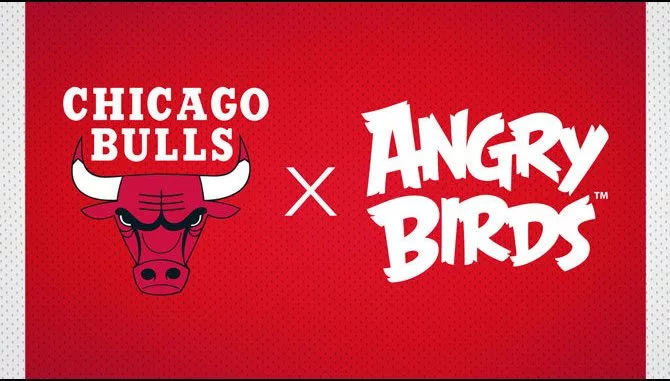
Source: Rovio
One of my all-time favorite sponsorship success stories is Angry Birds’ partnership with the Chicago Bulls. They took their iconic game to the next level by integrating basketball-themed characters—complete with the Bulls’ logo and star players.
I consider it a masterclass in cross-promotion.
Angry Birds didn’t just rake in extra revenue through in-game purchases, but they also captured the attention of an entirely new audience—basketball fans who were already loyal to the Bulls.
The move sparked a surge in downloads and engagement, proving that blending pop culture with gaming can create a win-win for both brands.
It’s a textbook example of how strategic partnerships can drive massive growth.
See related article: The Top 9 App-Promoting Methods that are Virtually Free
What are the pros and cons of the sponsorship model?
| Pros | Cons |
|---|---|
| Non-intrusive. – Sponsors provide value without interrupting the user experience. | Finding the right fit. – You need to align with brands that suit your app’s audience. |
| Direct revenue. – Brands pay you to feature their products. | External dependence. – Revenue relies on sponsorship deals, which may not be consistent. |
| Creative partnerships. – Opportunities for co-branded content or special promotions. |
People also ask
To help you tackle those burning questions about how to make money from your app, I sat down with Brian Wong, one of our product managers at Appetiser. We’ve dug into the most common questions, and he shared actionable tips to increase your app’s earnings.
Keep reading!
1. What is app monetization, and why does it matter?
App monetization is how your app makes money—whether through downloads, subscriptions, ads, or partnerships. Without it, even the most stunning app risks becoming a money pit.
Imagine pouring time and effort into building your dream app, only to realize later it can’t support itself without an expensive, time-draining redesign. Starting with the right monetization strategy is how you turn your app into a profitable, sustainable success from day one.
![]()
Money smarts tips for app creators: To make your app sustainable and impactful, focus on creating a strategy that aligns with your users’ needs and delivers clear value. Test different pricing models, highlight exclusive features, and continuously adapt based on user feedback and market trends. Build, tweak, thrive.
2. What is the best app monetization model?
Monetization depends on your business type. Subscriptions are often the go-to model, but it’s not one-size-fits-all. there are plenty of other options.
Do your research: understand your users, their limits, and what your competitors are charging. Find the sweet spot that will get users to convert and pay.
![]()
Money smarts tips for app creators: The best monetization strategy depends on your app type, audience, and business goals. But remember—user experience always comes first.
Whether you choose subscriptions, ads, or sponsorships, keeping your users engaged and happy is the secret to long-term success.
2. What is the most common misconception about app monetization?
A common mistake is thinking there’s one perfect pricing model for all apps. For example, some people assume a subscription is the best choice and set high prices, thinking all users will pay.
But if you don’t carefully calculate your revenue needs, you could end up losing money or pricing users out.
Many publishers also often worry that ads will drive users away, but that’s not always the case. It’s all about how you integrate them. When used creatively, ads can actually enhance the user experience. Don’t shy away from ads—just offer an ad-free option and get smart with how you use them.
![]()
Money smarts tips for app creators: You need a strategy to figure out what monetization works for your users and drives the revenue you need. For example, if you $100K on app development, you should think how to recoup that.
Should you charge $100 per customer and aim for 1,000? Or target thousands at a lower price? The right pricing model can make or break your app’s success—so choose wisely.
3. How do you turn free app users into paying customers?
The freemium model is a great start—it offers key features for free and then tempts users with premium upgrades. For example, you can hide extra content behind a paywall to create demand.
Limited-time discounts or promotions also work well to nudge users toward paying.
Gamification is another effective tactic. Reward users with in-app credits or bonuses when they upgrade. If it feels like a reward, the switch to paying is smoother.
![]()
Money smarts tips for app creators: Tap into the power of FOMO with limited-time offers and exclusive content. Make users feel like they’re missing out if they don’t upgrade. Package it as something special. Time it right, and the pressure to act will drive results.
See related article: How Do Free Apps Make Money? (With Expert’s Insights and Examples)
4. How do you decide if you should charge for a specific feature or not?
Deciding whether a feature should be premium typically depends on its importance to the app. If the feature isn’t critical to the core experience, it can be made premium. However, if your research shows that many users will love it and it could attract more people, you might want to consider making it free and accessible to many.
![]()
Money smarts tips for app creators: When using the freemium model, evaluate how essential a feature is. If it drives user retention or engagement, keep it free. Otherwise, make it premium.
5. What are the common challenges app creators face when monetizing their apps?
- User resistance. The biggest challenge is getting users to pay. To make this easier, focus on seamless transactions. Integrating options like Google or Apple Wallet reduces friction, so users don’t even realize they’re paying.
- Disruptive user experience. Ads can disrupt the experience if they’re too intrusive. For example, Facebook’s video ads force users to wait, which can be frustrating. In contrast, TikTok’s ads blend smoothly with content, making them feel almost part of the experience. The key is to make ads relevant and non-disruptive.
- Price sensitivity – App pricing can be tricky, as users have different expectations. To address this, test various pricing models, like flexible subscriptions or one-time payments. Different options can help cater to different user preferences and budgets.
![]()
Money smarts tips for app creators: Overcome monetization challenges by making payments seamless with options like Google or Apple Wallet. The key is to ensure users don’t even notice the transaction. Use non-intrusive, targeted ads—like TikTok’s—that blend with content. Finally, test flexible pricing models, like subscriptions or one-time payments, to find what works best for users.
Passion builds momentum, but strategy ensures longevity
At the end of the day, passion is what gets your app off the ground, but it’s the strategy that keeps it flying high. Whether you’re refining your monetization model or testing new partnerships, a solid plan is what will sustain your growth long-term.
So, fuel your passion, but make sure your strategy is strong enough to carry it forward.
Want to turn that passion into lasting success?
At Appetiser, we specialize in turning app ideas into revenue-generating powerhouses. With proven strategies and expert guidance, we help you craft apps that users love—and that pay off.
Book a free consultation today and let’s talk about your app’s future.

Jane Eslabra has 14+ years of experience producing content across traditional and digital platforms. She channels her strong passion for fostering tech startup growth through knowledge sharing.


